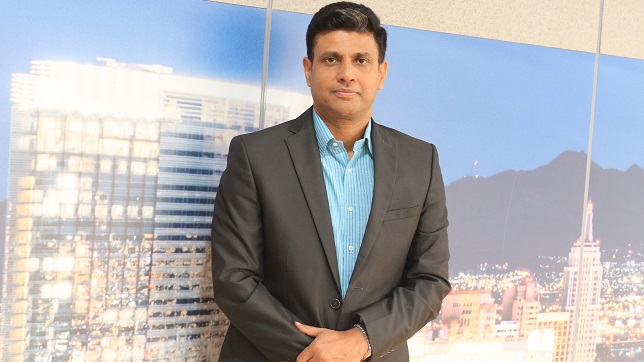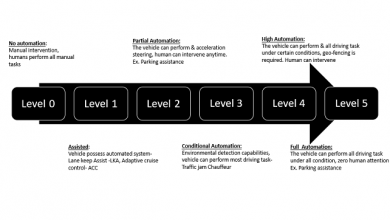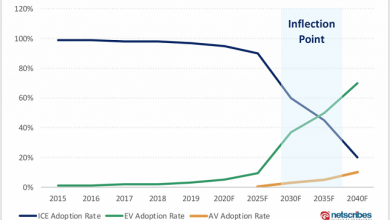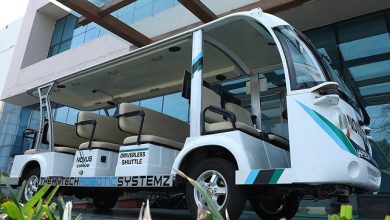HERE’s ‘Think Global, Act Local’ Strategy Seeks to Help Make India ‘Atmanirbhar’

In an exclusive interaction with Telematics Wire about the importance of location intelligence in a post COVID era, Nikhil Kumar, Country Head, India, HERE Technologies spoke about how India drives a considerable portion of the company’s R&D capabilities, with smart governance solution innovations rolled out from India for a global audience.
Can you tell us about HERE Technologies initiatives in automotive industry?
HERE is at the centre stage of the automotive industry with its pioneering work in creating digital representation of the physical world through our maps. This is not limited to digitalizing what you see on ground, but also providing a set of services to extend its applicability in different use cases. From a content company, HERE is becoming a platform company. It is expanding from automotive to other sectors like transportation & logistics, tech-media, telecom, retail and more.
What is the current scale of HERE’s operation in India?
In India we have about 4000 people of the global HERE workforce. They are highly skilled professionals. They are part of the team creating automation into this entire platform centric approach. Leveraging their local presence and extending that capability into the India market has been of advantage for the local operations.
What are HERE’s products and services being offered in India?
We all know that the government is talking about “act local and think global”. In this context, HERE is more Indian than any other company. At the centre- stage of our operations whether it is in engineering or global content; the operations team is seated in India. Now that is one aspect which is operational capability existing in India and trying to extend what we build in India to the global market. On the business side, we are working on enhancement of reach and extension of geospatial technologies into decision making by governments, businesses and communities, which is more about location based decision making. Out of these, those which make a lot of sense to us and so far what we have done is, we have put
this notion of accelerate, retain and unlock.
We ‘retain’ our automotive focus where we already have good presence. We have added feather into our cap, with Hyundai Venue vehicles, in which we are providing live search and traffic data. Put together, Maruti and Hyundai represent about 65 to 70% of cars manufactured yearly in India.
Next is the ‘unlock’ part which we are following in the public sector. We have given smart navigation and mapping platform to state governments, allowing them to not only to use the content that we offer, but also use location services like geocoding, routing, and geofencing all within their own server, by bringing their own private layers of data from different departments, whether it is Fire Department, Enforcement Agencies, Hospitals, Education on top of it and extending location based services.
Any specific tools or apps for transport and logistics?
In transportation and logistics we have various use cases for commercial vehicle, yard & warehouse management etc. We are providing apps and customized application services to help business in planning, routing, dispatch and more. In this space, we have a set of web based APIs and also native iOS, Android based SDKs. We work with local solution providers and system integrators in logistics space, except for some cases like with some of the state transportation where we work directly.
You launched HERE WeGo Deliver during the pandemic to help businesses. Tell us more.
HERE WeGo Deliver was useful during the pandemic. During the early phase of COVID-19, small businesses were struggling to move to online transactions. The challenge was how to carry out the last mile delivery. Our platform made it easy for enterprises. One just needs to put a ‘.csv’ file of drop locations, which could be multiple locations and considering various parameters, it works out a delivery route plan.
HERE WeGo there are two things, one is for B2B and other is for consumer space. Now we have extended that HERE WeGo Deliver for small and medium enterprises. We have done a lot of visibility for HERE WeGo Deliver, on how it benefits the businesses because our SME businesses are our prime focus. But in order to enhance the brand quotient for HERE WeGo, we also needed to enrich our India content. During the last year and half, we have put a lot of effort in the way we are capturing and writing our content. Our ability to acquire those probes data which actually goes into building your traffic, was limited in India. This required a lot of investment, which over the last 18 months we have made. And we have moved from 500 million probe points in a month, to 1500 million, three times enhancement. You will also see visibility campaign around HERE WeGo and we definitely believe that increasingly people will know and use HERE WeGo in the coming weeks and months.
Can you share something about HERE Marketplace and its response in India?
Marketplace is a collaborative big data analytics platform. Because of its native construct being very API driven and agnostic to sources and type, it allows companies and developers to integrate the location context into the application and services for various industry segments. It can integrate different types of data from sensors, wearables, physical infrastructure, IoT devices, all kinds of data sources, coming in different formats, as it is agnostic to types and sources. Hence it allows the holistic aggregation of all the sources at one platform which become very collaborative and also allows depending upon how we want to use it.
In India, we are working with different business organizations and large business group houses. They have different businesses within their group companies, and they would like to use the power of different sources of the data they collect. Put into a pipeline where everything becomes normalized to be run on the business logic to be used and extended for different services like- geocoding, routing and geofencing.
On the other side, the same set of data they can monetize. This monetization is more a concept like a typical marketplace, where somebody whom you do not know as to whether he is going for prospecting or using your data. So it is indeed a platform which is not in itself complete, but it becomes complete in association with other sources of data and eventually becomes a very attractive proposition for a buyer. That notion we are bringing in the market, that it is a very massive platform oriented offering that we are providing, and we have started extending in Indian market. We are still in a planning stage because we are trying to bring that with some large case of success story and then extend into the normal customers and businesses.
Will HERE use data from sensors in automotives?
All the data sources which are either mounted on the vehicle or as a wearable; are providing different types of location based context. We are actually working with partners in acquiring data from sources including vehicle sensors and anonymizing it, as this is very important in terms of data privacy. Thereafter delinking the private attribute from the geolocation content and then using it for different use cases. It’s already happening here for not only India but we are collecting terabytes of data globally, which is coming from the sources which you are referring to and then we use artificial intelligence and machine learning to unearth the geospatial context and intelligence inside it.
Do you see HERE catering to the needs of autonomous vehicles in future?
Not only in autonomous, but high definition content it is going to be very useful in the way we are managing our Smart City infrastructure. Transportation, logistics, navigation and many other areas will see its usage. We have already started working and creating applications around these.
Do you see synergy between the Smart Cities, ITS and Smart Vehicle which will all be connected?
It’s an industry challenge. We need to have the option of being connected. Next, what kind of connectivity or protocol should that be there. 3rd is being able to manage all the sources of data and its users, by providing the information back and forth. It may call for Smart City to be a little more agile in its construct. Some of the cities have already started doing it, and I am hopeful that the majority of the Smart Cities initiatives will get adapted to this notion which is agile, and platform driven.
Published in Telematics Wire





